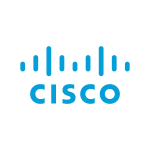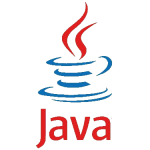The Securing Email with Cisco Email Security Appliance (SESA) course shows you how to deploy and use Cisco® Email Security Appliance to establish protection for your email systems against phishing, business email compromise, and ransomware, and to help streamline email security policy management. This hands-on course provides you with the knowledge and skills to implement, troubleshoot, and administer Cisco Email Security Appliance, including key capabilities such as advanced malware protection, spam blocking, anti-virus protection, outbreak filtering, encryption, quarantines, and data loss prevention.
This course helps you prepare to take the exam, Securing Email with Cisco Email Security Appliance (300-720 SESA), which leads to CCNP® Security and the Certified Specialist – Email Content Security certifications. This course also earns you 24 Continuing Education (CE) credits towards recertification.
To fully benefit from this course, you should have one or more of the following basic technical competencies:
- Cisco certification (Cisco CCENT® certification or higher)
- Relevant industry certification, such as (ISC)2, CompTIA Security+, EC-Council, Global Information Assurance Certification (GIAC), and ISACA
- Cisco Networking Academy letter of completion (CCNA® 1 and CCNA 2)
- Windows expertise: Microsoft [Microsoft Specialist, Microsoft Certified Solutions Associate (MCSA), Microsoft Certified Systems Engineer (MCSE)], CompTIA (A+, Network+, Server+)
Modules and Learning Path
- Module 1: Describing the Cisco Email Security Appliance
- Module 2: Administering the Cisco Email Security Appliance
- Module 3: Controlling Spam with Talos SenderBase and Anti-Spam
- Module 4: Using Anti-Virus and Outbreak Filters
- Module 5: Using Mail Policies
- Module 6: Preventing Data Loss
- Module 8: SMTP Session Authentication
- Module 9: Email Authentication
- Module 10: Email Encryption
- Module 11: Using System Quarantines and Delivery Methods
- Module 12: Centralized Management Using Clusters
- Module 13: Testing and Troubleshooting
- Module 14: Setting Up the Centralized Spam Quarantine
- Module 15: Using Safelists and Blocklists to Control Email Delivery Based on Sender
- Module 16: Configuring Spam Management Features for End Users
- Module 17: Managing Messages in the Spam Quarantine
- Module 18: Policy, Virus, and Outbreak Quarantines
- Module 19: Delivery Methods
- Module 20: Centralized Management Using Clusters
- Module 21: Best Practices
- Module 22: Testing and Troubleshooting
This course is designed for professionals in the following job roles:
- Network or security technicians
- Cisco integrators and partners
Upon completing this course, participants will be prepared to pursue the Cisco Certified Specialist – Email Content Security certification, validating their advanced skills in email security. Additionally, participants will receive a certificate from Semos Education recognizing their completion of the Securing Email with Cisco Email Security Appliance (SESA) training.








